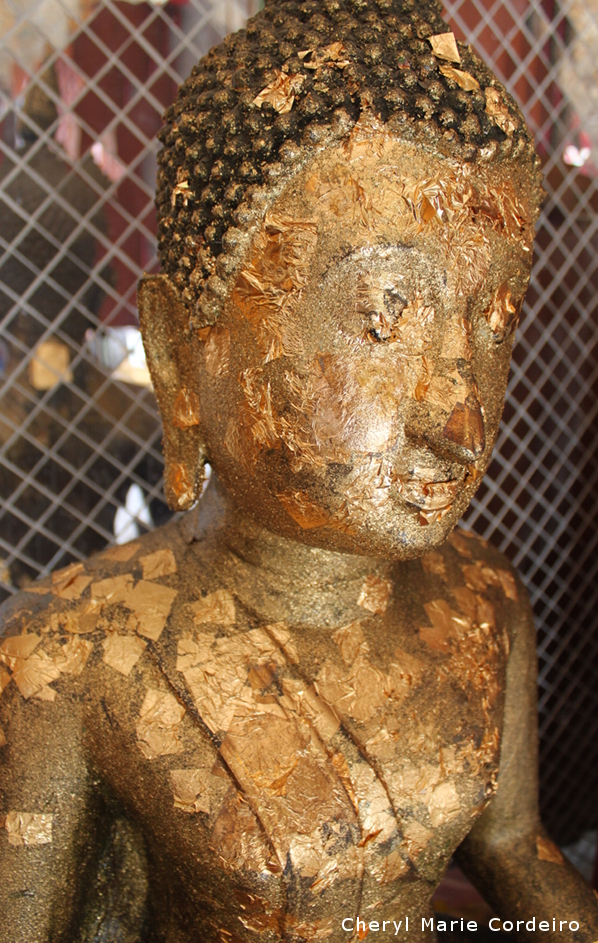Covered in gold leaves
Text & Photo © JE Nilsson, R Cordeiro, CM Cordeiro 2013
Temple visits
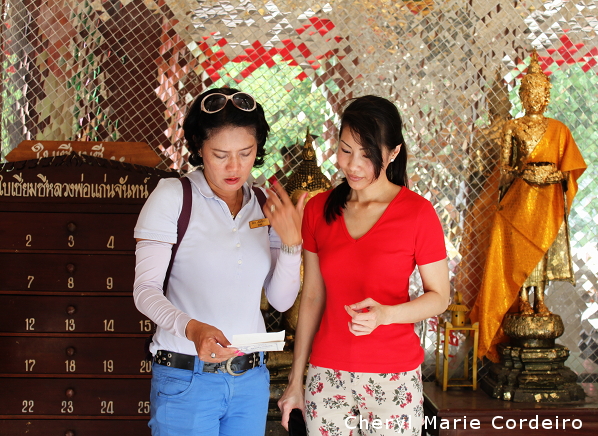
Fortune on a stick
When in Thailand on a short visit you have an endless number of options on how to spend your time. However, if you are not shopping, sunbathing, eating, drinking, boating or trying out any of the local spas or various massage options, you will eventually find that you are on your way into one or several temples.
For example, right next to the Maeklong Railway Market you will find the Wat Baan Laem temple with its important Buddha statue and just near that, another temple, and near that, another.
In one of these, I found the option of having my future read to me through a brush pot of fortune sticks. For those who have not done this, you shake a brush pot filled with numbered bamboo sticks until one of them somehow volunteers itself out of the holder. Eventually I got my stick and with the help of my guide Susie, I found the matching fortune explanation.
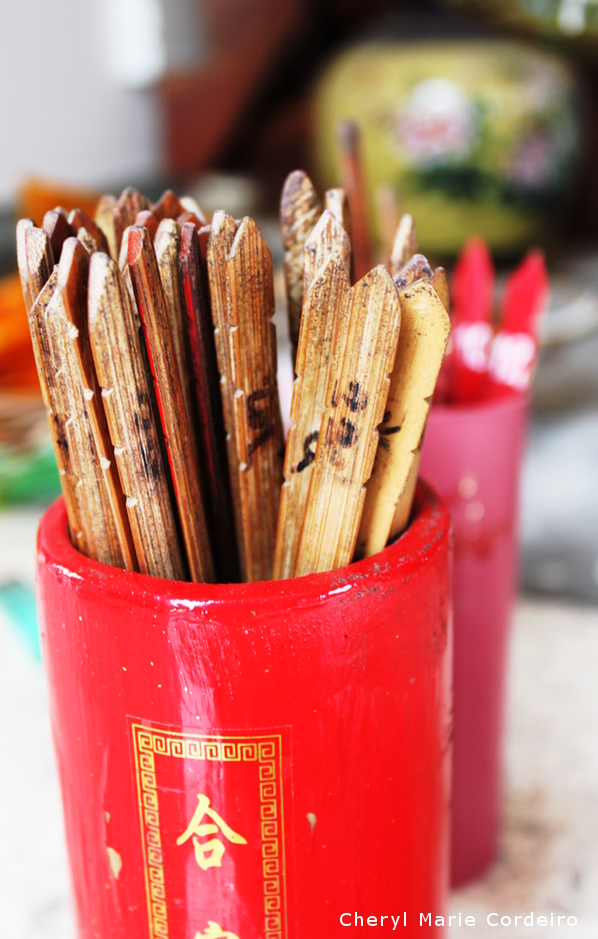
Bamboo fortune sticks
From a wooden cabinet in the corner that contained numbered boxes, Susie pulled out the piece of paper that contained information for my number and did her best to translate the Thai predictions into English. Three-quarters of it got lost in the translation but on the whole, things looked good. I think.
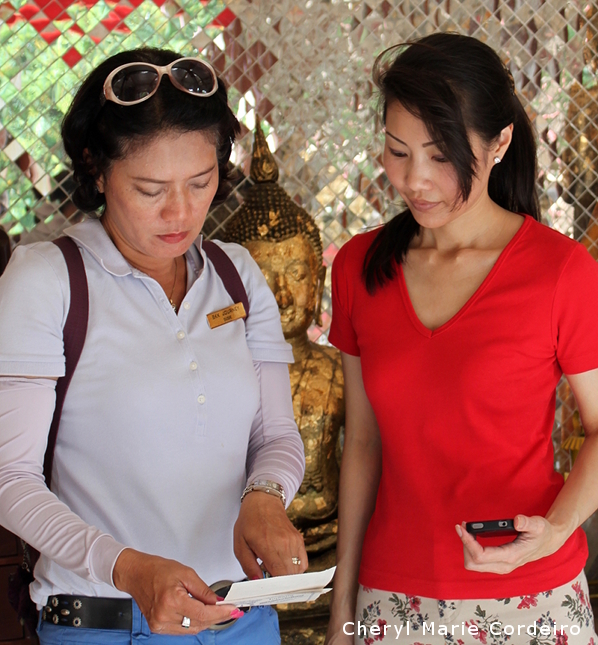
All in all things looked good, I think
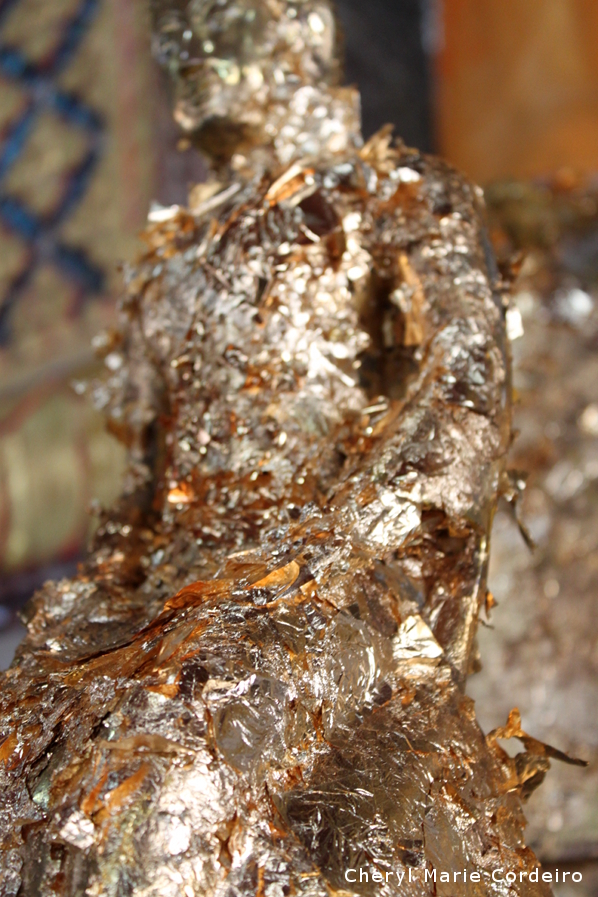
Robe in gold
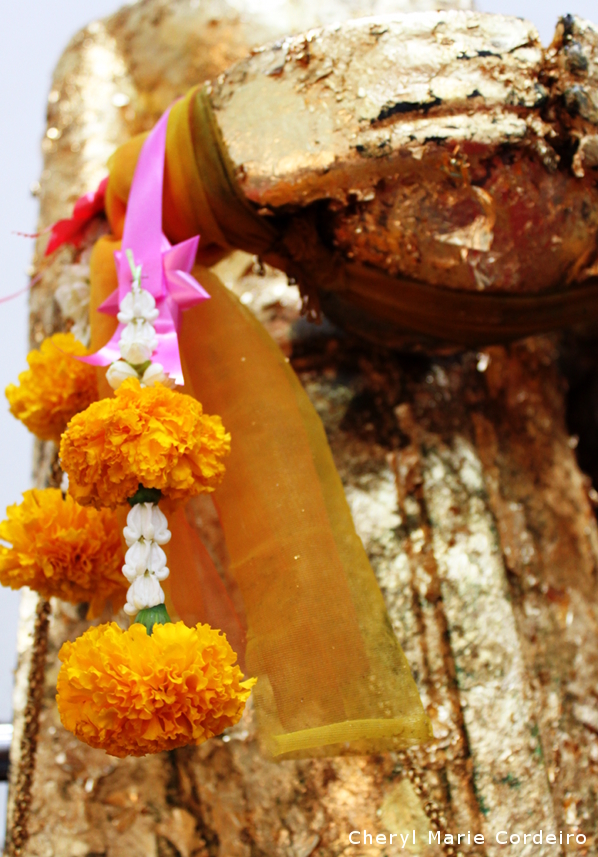
Floral adornments
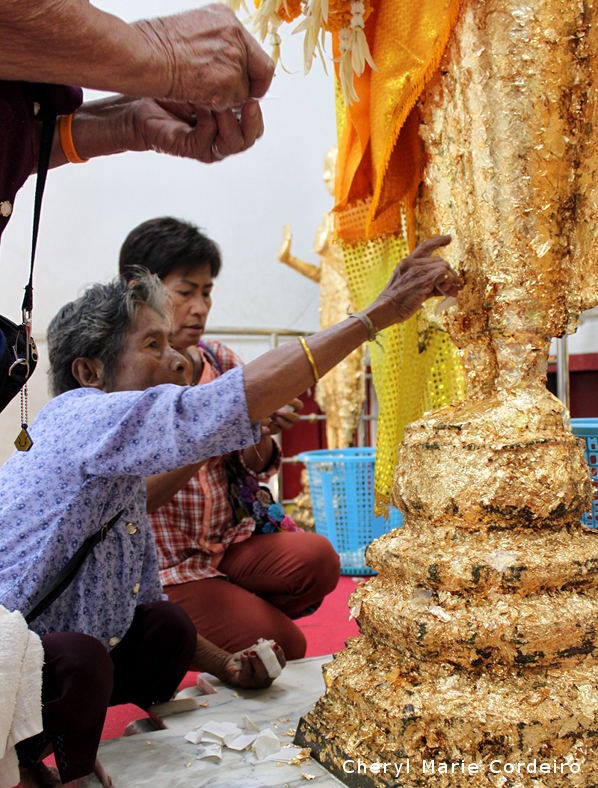
Pasting gold onto the statues
In front of me, three women sat patiently and in full concentration pasting one gold leaf after another onto the statue. Then all of a sudden, the woman in the purple floral blouse noted my presence with the camera, turned to me and beamed the brightest, most curious of smiles. I smiled right back at her. For a brief moment, we connected across age, time, distance and culture.
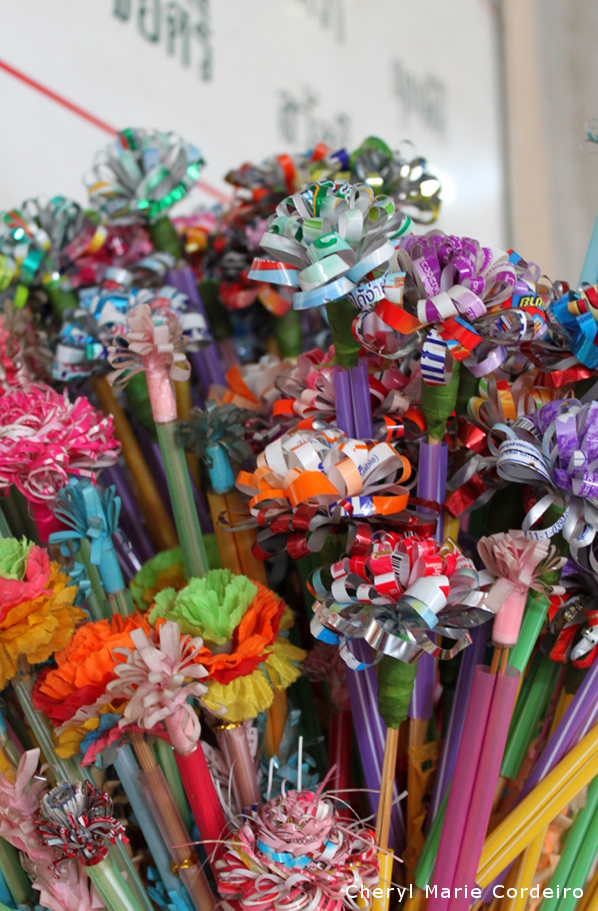
Incense sticks
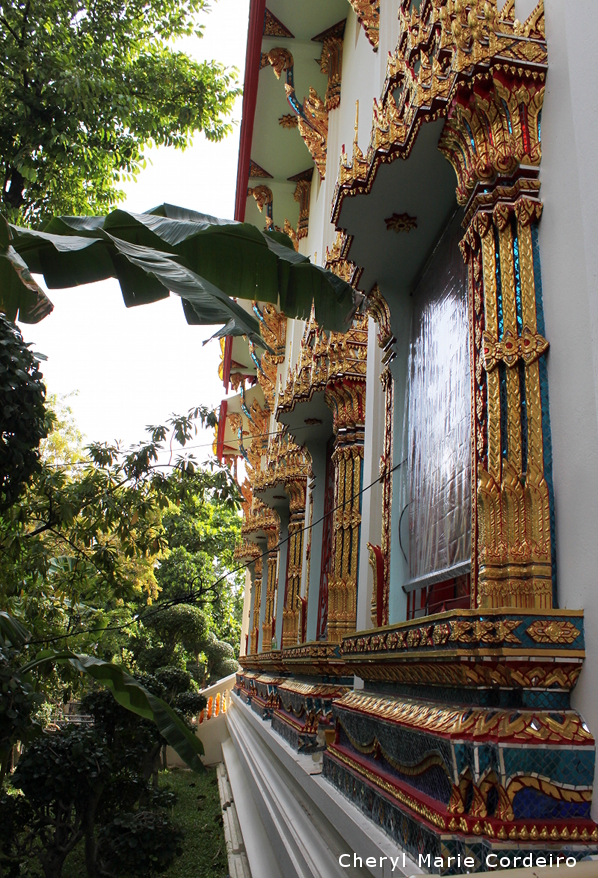
Temple side facade
Maeklong Railway Market – Bangkok
The market has been here for generations, so when the railway was set up here in 1905 the merchants stayed, and just decided to make way for the train when it actually ran through the market. It does so seven to eight times a day, all days of the week. Once the train is gone, the vendors push back the stalls and awnings into position and everything goes back to normal as if nothing has happened. Locally, the market is known as Talad Rom Hoop Market which literally translates to “Market Umbrella Pulldown”.
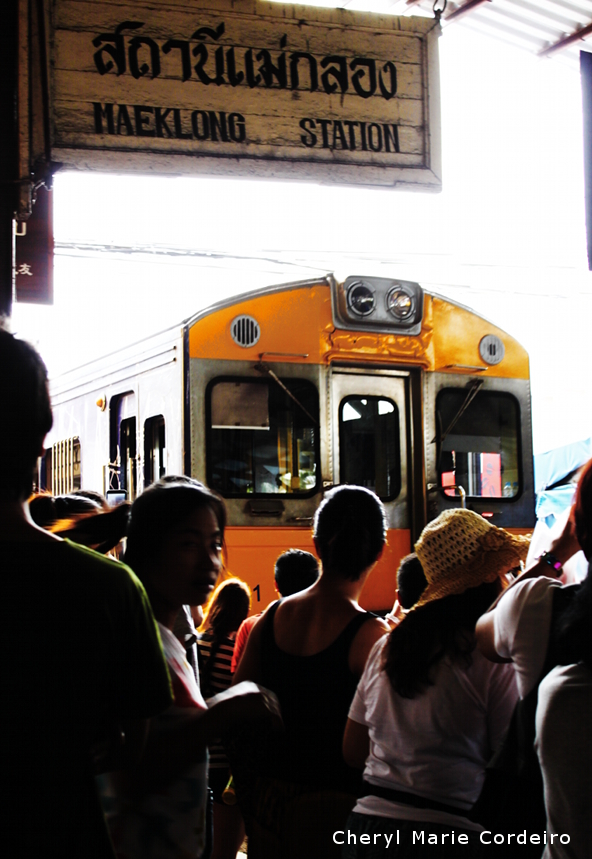
Incoming train to the Maeklong station
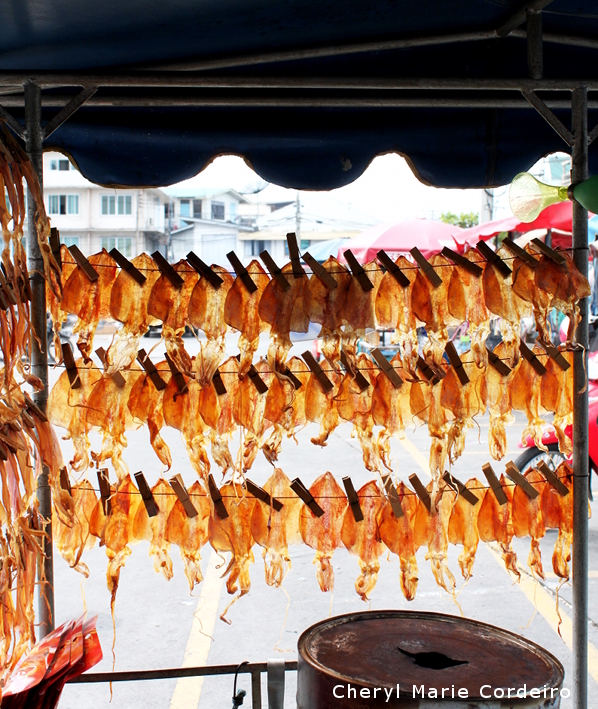
Pegged dried cuttlefish
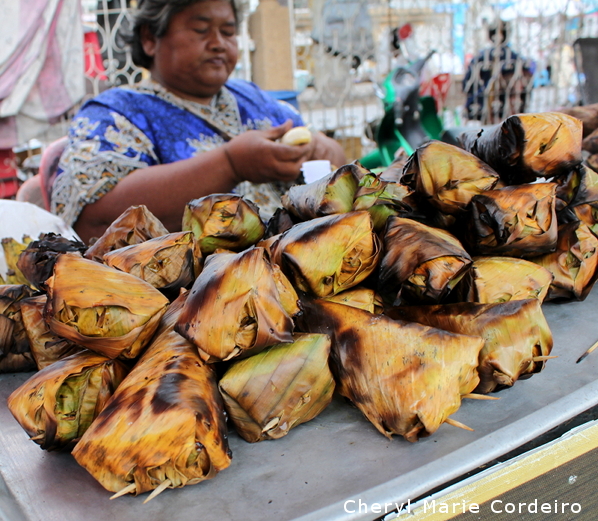
Fragrantly wrapped dumplings
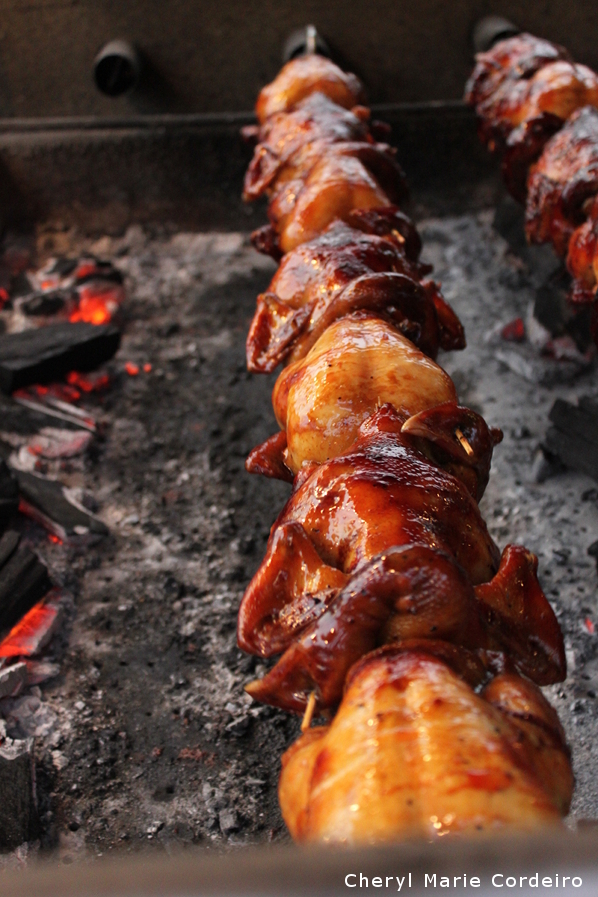
Chicken on an open charcoal grill
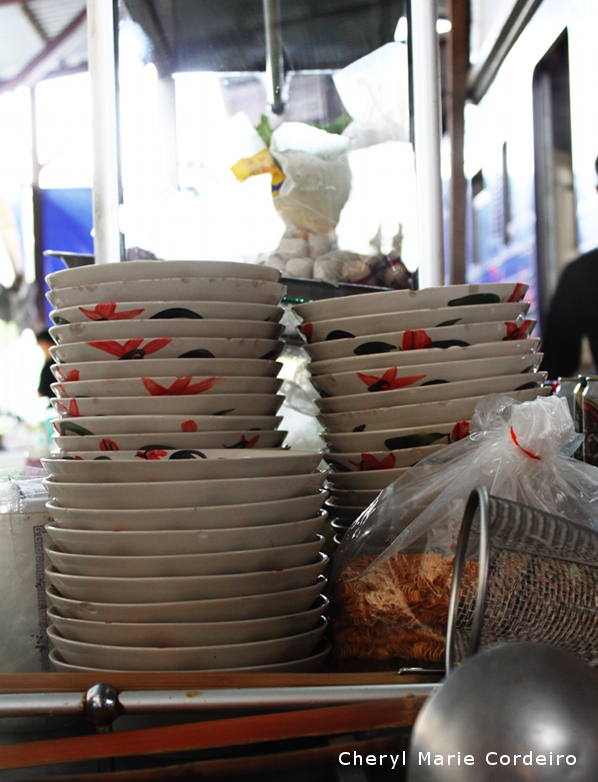
Bowls that would be sold at ‘antique shops’ in Singapore and Hong Kong, used here at a street side hawker stall
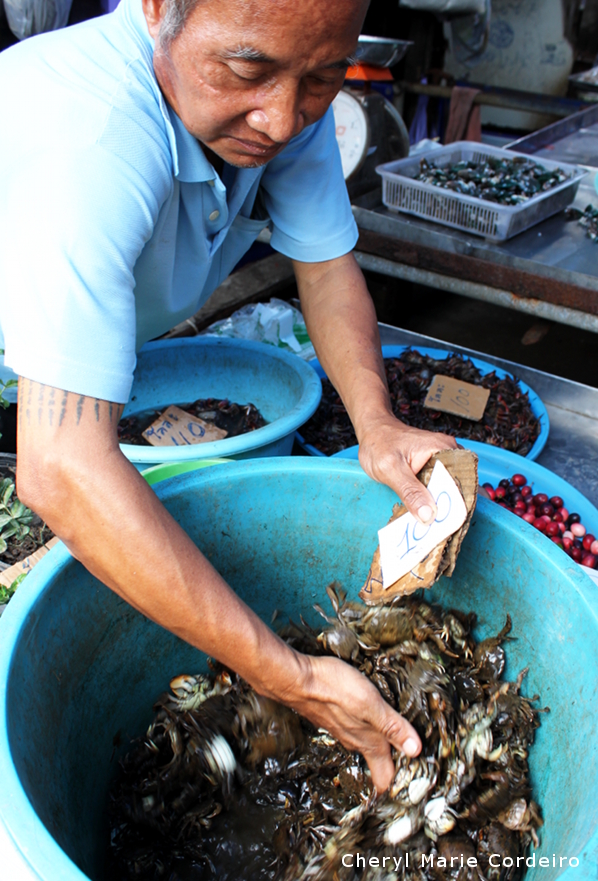
He was kind enough to put his hand into this bucket of small crabs, showing that they were all alive and well
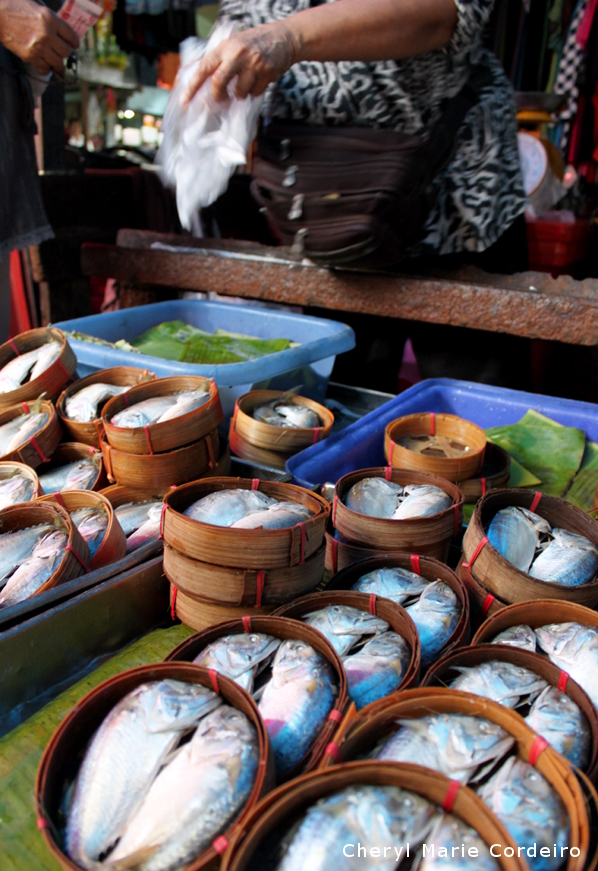
Steamed salted fish
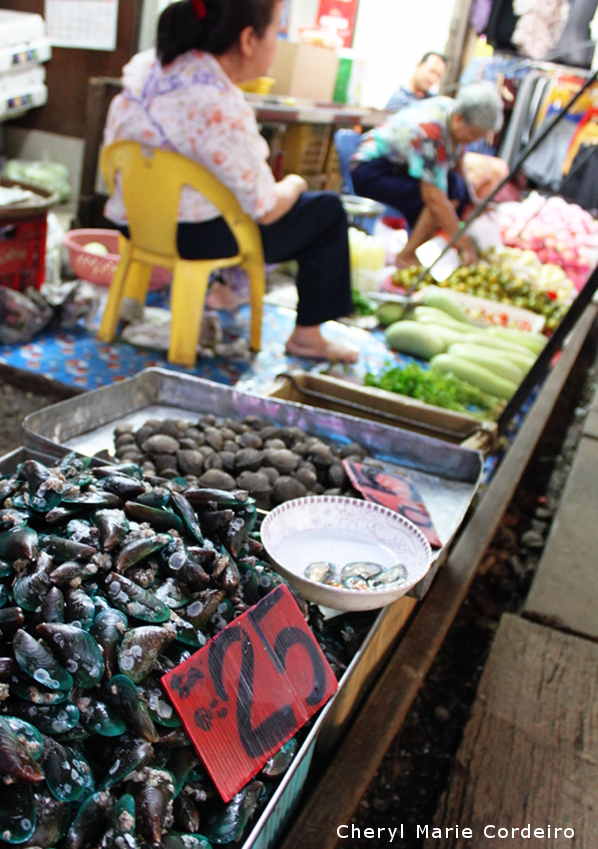
Full array of items at this market, including seafood and fresh meat
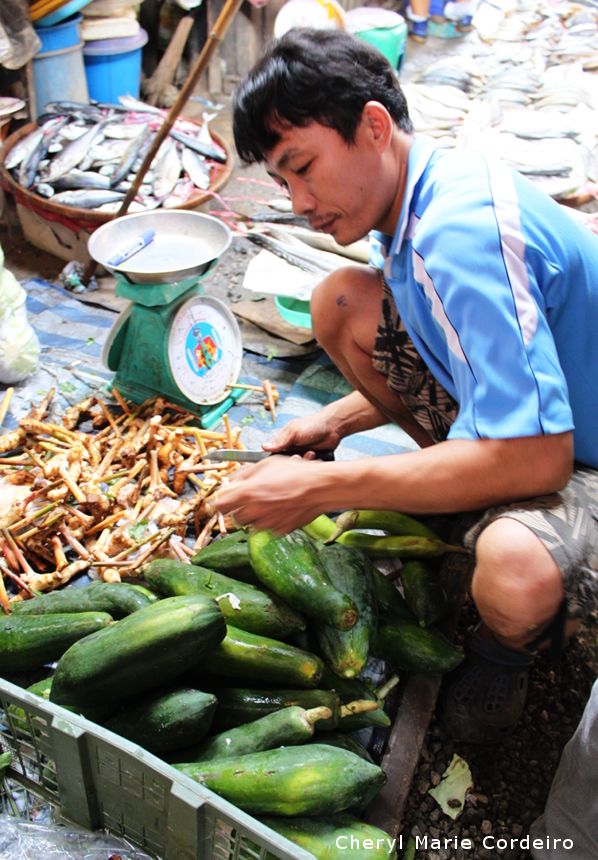
Working with galangal
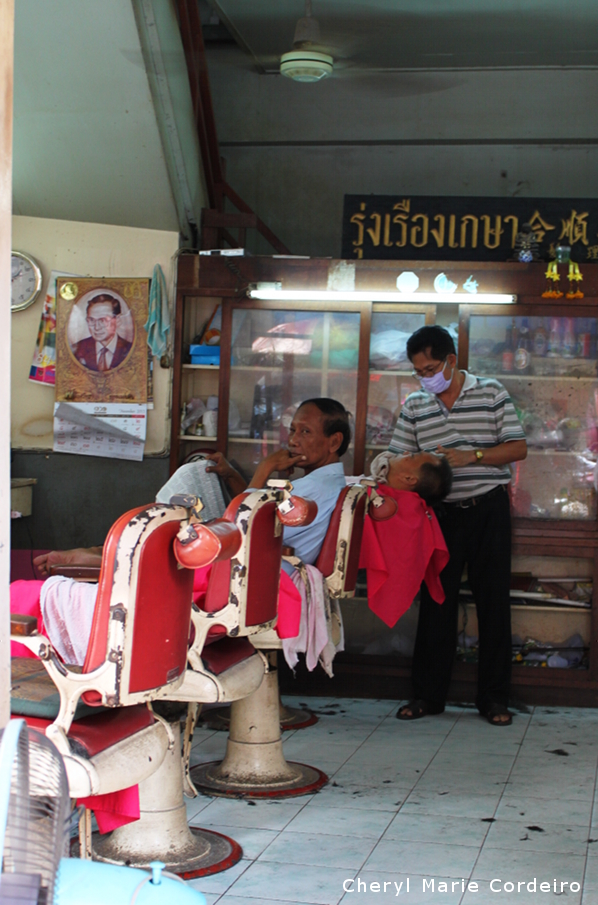
A barber shop just about 50m from the railway tracks
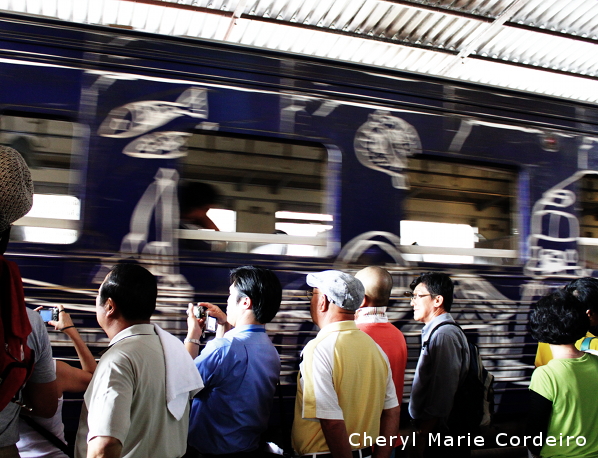
Passing train
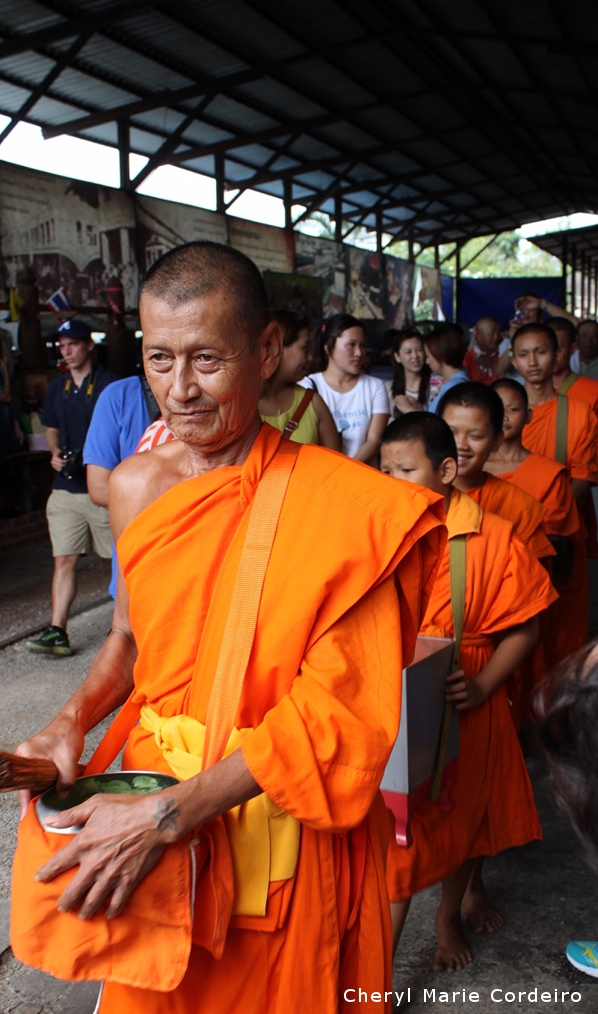
On a round of chant
The most remarkable feature of this market visit was not the stalls or the stall owners who sold their goods on the train tracks, withdrawing their awnings and packing their goods to make way for the incoming train every hour or so, but the visitors who stood right on the train tracks all with cameras in hand to capture that very moment when the train rolls in.
The train blew its whistle several times and the locals had to (contrary to Thai politeness etiquette) raise their voices at visitors shooing them away for their own safety.
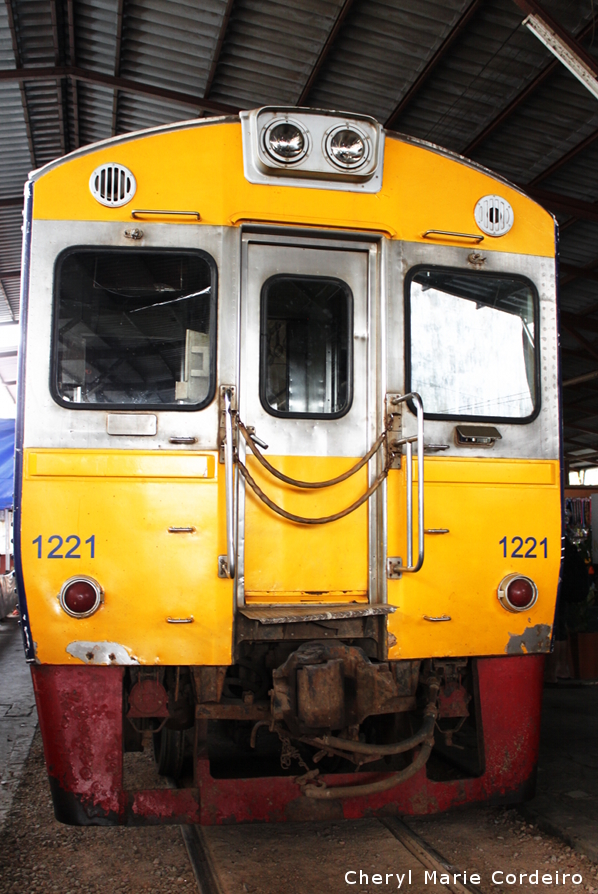
Parked
Tuk-tuk back
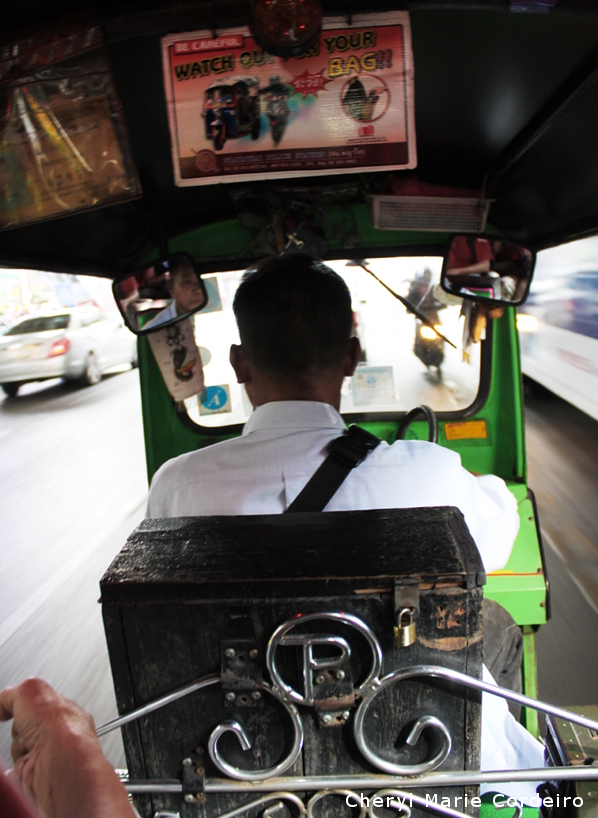
Fast!
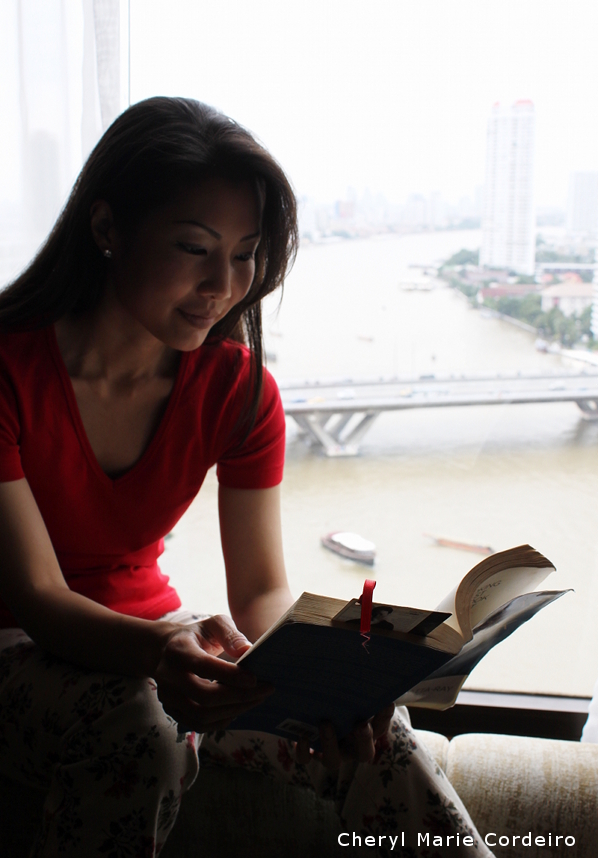
All in all, it was interesting to see how narrow a margin it was accepted that there could be between life and death, since there was obviously no such thing as to give up the family spot at the market, some acquired from 1905 and onwards until today.
Set against the changing landscape of the city, the running of this market though superficially simple, unfolds on closer observation, a multifaceted context of situation.
